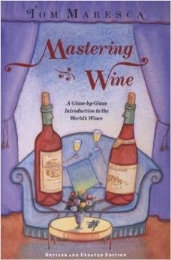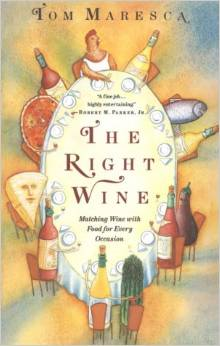The Wine Media Guild opened this season’s series of tasting lunches with a fine survey of the varied output of the Campania region of south-central Italy, probably the most exciting region of Italy for winemaking today. I’ve long been a major fan of Campania because of the richness of its viticultural traditions and the amazing variety of its fine indigenous grapes.
Several years back, in Decanter, I predicted that wine lovers would someday speak of Campania with the same reverence they now reserve for Burgundy. That hasn’t happened yet, but the extremely high level of the Media Guild’s array of wines – 31 wines, of at least 8 indigenous red and white varieties, from several different Campanian regions – showed why to my mind that conversion is still inevitable.
 Ilaria Petitto, the head of the Donnachiara winery, was the event’s guest of honor. Five of Donnachiara’s wines were represented: the whites Resilienza 2017 (Falanghina), Empatia 2018 (Fiano di Avellino), and Alethia 2017 (Greco di Tufo), and the reds Aglianico 2017 and Taurasi 2015. All were fine and in themselves a fair example of Campania’s variety and quality, but I was particularly impressed by the reds.
Ilaria Petitto, the head of the Donnachiara winery, was the event’s guest of honor. Five of Donnachiara’s wines were represented: the whites Resilienza 2017 (Falanghina), Empatia 2018 (Fiano di Avellino), and Alethia 2017 (Greco di Tufo), and the reds Aglianico 2017 and Taurasi 2015. All were fine and in themselves a fair example of Campania’s variety and quality, but I was particularly impressed by the reds.
 Donnachiara’s white wines have always been textbook examples of the great Irpinian varieties, but in the past, the estate’s red wines lagged them. A few years back, Signora Petitto engaged the famed enologist Riccardo Cotarella, and the reds have been getting better and better ever since. Donnachiara is a small estate by the standards of the region’s largest, like Mastroberardino and Feudi di San Gregorio, but it is rapidly joining them in prestige.
Donnachiara’s white wines have always been textbook examples of the great Irpinian varieties, but in the past, the estate’s red wines lagged them. A few years back, Signora Petitto engaged the famed enologist Riccardo Cotarella, and the reds have been getting better and better ever since. Donnachiara is a small estate by the standards of the region’s largest, like Mastroberardino and Feudi di San Gregorio, but it is rapidly joining them in prestige.
Because of the diversity of their grape varieties and vinicultural zones, I can’t generalize about the other 26 wines, except to say that all were fine – which is in itself pretty remarkable.
- The stand-out among the Falanghina and Falanghina-based wines was Marisa Cuomo’s Furore Bianco 2018 (Costa d’Amalfi), a great wine of complexity, depth, and suavity.
- Among the Fiano di Avellino wines, I particularly liked Tenuta Sarno 1860’s two bottles (2016 and 2017), both of which displayed an admirable varietal character.
- Among the Greco di Tufo, Benito Ferraro’s Terra d’Uva 2018 just shone – but then Ferraro’s Grecos always do: This is a top-flight Greco producer.
- Among the reds, I loved Villa Raiano’s Aglianico Costa Baiano 2015 and the Contrade di Taurasi (aka Cantine Lonardo) Taurasi 2013: Both were really fine, elegant and fresh, complex and totally enjoyable.
 Teresa Bruno, co-owner of the Petilia winery with her brother Roberto, who is the winemaker, had gotten caught in New York traffic, arrived late during lunch, and dashed from table to table tirelessly pouring samples from two very welcome bottles: Petilia’s 2017 Ape, a Fiano di Avellino fermented on the skins, and 2015 Quattro Venti, a Greco di Tufo. The Fiano was lovely, with its almondy perfumes and nut and wildflower flavors enhanced by the long skin contact, and the Greco was what I think of as classic Petilia – big and fruity and balanced, just great Greco.
Teresa Bruno, co-owner of the Petilia winery with her brother Roberto, who is the winemaker, had gotten caught in New York traffic, arrived late during lunch, and dashed from table to table tirelessly pouring samples from two very welcome bottles: Petilia’s 2017 Ape, a Fiano di Avellino fermented on the skins, and 2015 Quattro Venti, a Greco di Tufo. The Fiano was lovely, with its almondy perfumes and nut and wildflower flavors enhanced by the long skin contact, and the Greco was what I think of as classic Petilia – big and fruity and balanced, just great Greco.
Except to Italian wine nuts like me, none of these wines has the name recognition of the famous Bordeaux or Burgundy estates. It’s useful to remind ourselves that the Romans of the Empire regarded Campanian wines as the best of the best. The Romans weren’t stupid: They recognized and exploited the variety of Campania’s soils and exposures to produce their versions of Chateau Lafite and Richebourg.
Obviously, we have no way of knowing whether the grapes being grown in Campania today are the same varieties the Romans cultivated, but we do know that all of them are natives – international varieties have made almost no headway in Campania – and many of them are very old indeed. And more and more indigenes are being rescued all the time. Not two decades back, Falanghina was endangered. Even more recently, Pallagrella bianco and Pallagrello rosso and Casavecchia have been brought back from the brink of extinction and are now producing award-winning wines.
A few years ago I met a winemaker who told me that on his roughly 30 hectares near Naples he grows 30 or more grape varieties, half of which, he said – and I believe him – “are not in the catalog.” This is why, for me, Campania is endlessly fascinating: It’s going to be presenting us with new old wines for years to come. To paraphrase an old Roman line: Ex Campania, semper aliquid novum.


























